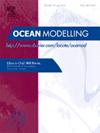Attention-enhanced deep learning model for reconstruction and downscaling of thermocline depth in the tropical Indian Ocean
IF 2.9
3区 地球科学
Q2 METEOROLOGY & ATMOSPHERIC SCIENCES
引用次数: 0
Abstract
Accurate estimation of high-resolution thermocline depth is important for investigating ocean processes and climate variability on multiple scales. Due to the sparse coverage and high costs associated with in situ observations, reconstructing ocean interior structure from sea surface data serves as a valuable alternative. In this study, a new deep learning model named Enhanced Block Attention Module-Convolutional Neural Network (EBAM-CNN) was proposed to reconstruct thermocline depth in the tropical Indian Ocean (TIO) from 1993 to 2022. Absolute dynamic topography (ADT), sea surface temperature (SST), and sea surface wind (SSW), along with geographic information (latitude and longitude) and temporal data, were employed as input variables. In comparison with the traditional convolutional neural network (CNN) model, the proposed model demonstrates better performance, with an overall Root Mean Square Error (RMSE) of 5.29 m and a Pearson Correlation Coefficient (R) of 0.87. In addition, this study employs a downscaling approach to reconstruct higher-resolution thermocline depth data. An analysis of the downscaling results confirmed that the proposed framework effectively reconstructed mesoscale sea subsurface features from high-resolution surface observations, significantly enhancing thermocline depth estimates and providing robust data support for oceanic and climatic research.
热带印度洋温跃层深度重建和降尺度的注意力增强深度学习模型
高分辨率温跃层深度的准确估计对于在多尺度上研究海洋过程和气候变率具有重要意义。由于现场观测的覆盖范围稀疏且成本高,因此从海面数据重建海洋内部结构是一种有价值的替代方法。本研究提出了一种新的深度学习模型——增强块注意模块-卷积神经网络(EBAM-CNN),用于重建1993 - 2022年热带印度洋(TIO)的温跃层深度。以绝对动力地形(ADT)、海面温度(SST)和海面风(SSW)以及地理信息(经纬度)和时间数据作为输入变量。与传统的卷积神经网络(CNN)模型相比,该模型表现出更好的性能,总体均方根误差(RMSE)为5.29 m, Pearson相关系数(R)为0.87。此外,本研究采用降尺度方法重建更高分辨率的温跃层深度数据。对降尺度结果的分析证实,该框架有效地从高分辨率地面观测中重建了中尺度海洋地下特征,显著提高了温跃层深度估算,为海洋和气候研究提供了有力的数据支持。
本文章由计算机程序翻译,如有差异,请以英文原文为准。
求助全文
约1分钟内获得全文
求助全文
来源期刊

Ocean Modelling
地学-海洋学
CiteScore
5.50
自引率
9.40%
发文量
86
审稿时长
19.6 weeks
期刊介绍:
The main objective of Ocean Modelling is to provide rapid communication between those interested in ocean modelling, whether through direct observation, or through analytical, numerical or laboratory models, and including interactions between physical and biogeochemical or biological phenomena. Because of the intimate links between ocean and atmosphere, involvement of scientists interested in influences of either medium on the other is welcome. The journal has a wide scope and includes ocean-atmosphere interaction in various forms as well as pure ocean results. In addition to primary peer-reviewed papers, the journal provides review papers, preliminary communications, and discussions.
 求助内容:
求助内容: 应助结果提醒方式:
应助结果提醒方式:


